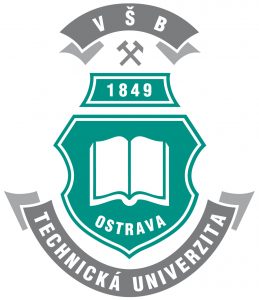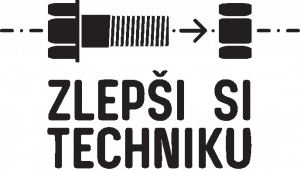Subcategory
Thematic articles
The IT4Innovations National Supercomputing Centre is celebrating a great international success
| 15. May 2019 Read ...Projects
-
Feeling map of heat
-
Biomass as an alternative in the energy system
-
Resolve project
-
The Pan-European Urban Climate Service
-
Optimal fitting of windows
Feeling map of heat

The Adaptation Strategy was devised with the involvement of the general public. Besides regular updates on the project (in the form of press releases), a feeling map of heat was also created. During the first half of August 2017, citizens had the opportunity to express their own personal perception of heat via the website fajnova.cz – i.e. a similar platform to the system used to collect citizens’ opinions when creating the Ostrava City Strategic Plan.
Citizens identified:
- Places where they felt good and enjoyed spending time during hot summer weather
- Places where they did not feel good during hot summer weather
- Places that should be changed in order to make them more pleasant in hot weather
- Places they recommend where summer visitors to Ostrava could spend time
Biomass as an alternative in the energy system

As part of its efforts to reduce energy consumption and CO2 emissions, Ostrava’s zoo has built a boiler system burning biomass (woodchips) as part of its dendrology complex. The zoo covers a large area, and is a permanent source of wood-based biomass. The zoo uses a chipper, loader and tractor to harvest and process the biomass before burning.
Resolve project

Ostrava is also involved in the international project ‘Resolve’, which brings together European cities (from countries including Sweden, the Netherlands and Slovenia) to share experience on implementing sustainable mobility. The aim of the project is to improve air quality/reduce carbon emisssions created by retail related traffic by making public transport more attractive and accessible and creating a safe environment for cyclists and pedestrians. The project (co-financed via the INTERREG programme) will be implemented up to 2021.
[art_yt id=”S0NXoDqvtRc” wvideo=”640″ hvideo=”360″ position=”center” urlvideo=”https://www.youtube.com/watch?v=S0NXoDqvtRc&feature=youtu.be” namevideo=”” desc=”” durationmin=”” durationsec=”” upld=”” tmburl=”https://i.ytimg.com/vi/Ogk1RAO-Z6w/maxresdefault.jpg” thumbnailwidth=”1280″ thumbnailheight=”720″]
More information about the project here.
The Pan-European Urban Climate Service

Ostrava is involved in the implementation of the Horizon 2020 programme ‘The Pan-European Urban Climate Service’, which processes the best available scientific climate data and presents the data in a comprehensible form for use in spatial planning, helping end users (in the public and private sectors) to address the consequences of climate change on a local level. The project involves a total of 14 partners from 6 European countries.
For the City of Ostrava, the project is useful not only in terms of strengthening cooperation with partners, but also due to its use of a mathematical model of temperature changes in the city and as a basis for monitoring indicators of climate change impacts.

- Place
- VŠB - Technical University of Ostrava
- Website
- http://www.zlepsisitechniku.cz/technicke-vychytavky/chytre-osazena-okna/
Optimal fitting of windows

Have your windows at home been replaced? Maybe it occurred to you if there is no other option than to fit new windows to the same position as that of the original frames. None of us likes the dewy glass and excess moisture around the frame. If you, as users, would moreover appreciate a comfortable wide sill, larger viewing angle and more light in the room, our solution could appeal to you. Currently, one of the most desired alterations of buildings is their insulation. The reason is the rising cost of heating, and, as a result of price rises, interest in additional insulation (or insulation of the building at the time of construction) is increasing in the case of houses as well as blocks of flats.
The VŠB – Technical University of Ostrava development workshop has had many years of experience in insulation of buildings and thanks to various tests, they found a clever way of fitting windows with economic, thermo-technical, aesthetic and, above all, user benefits.
When using thick insulations, windows seems too recessed in the perimeter wall. The aim is, therefore, to move the window as close to the exterior as possible and align it with the plane of the outer face of the wall support structure. If the window is in this position, the subsequent outer insulation is easier and faster, and moreover, they achieve better thermal insulation properties.
Their next improvement proposal is so called chamfer, or rather the opening of vertical walls around the windows. Similarly, openings into the stone walls of medieval castles were built let in more sunshine. The method of adjusting windows called “chamfer jamb” saves material, provides better view, and it looks interesting from the outside. Tests have shown that the chamfer surprisingly has no impact on the deterioration of the insulating properties in critical surroundings of the window. The basic condition remains careful covering of the largest possible area of the window frame with thermal insulator.
Their solution for windows is protected as industrial property. Their introduction into common construction practice is a long-term process. For the future, there is a realistic assumption of its general use when replacing windows and in home insulation.
The products come from the developmental workshop of Pavel Oravec and Marek Jašek from the Faculty of Civil Engineering, VŠB – Technical University of Ostrava https://www.fast.vsb.cz/en


Fact sheets
Climate Change Adaptation Strategy
![]()
A key document addressing the impacts of climate change on the local level. Ostrava is one of just 8 Czech towns and cities (out of a total 605) which has drawn up (or is drawing up) this strategic document.
Sustainable Energy and Climate Action Plan (SECAP)
![]()
Another important document. The SECAP sets out projects aiming to reduce energy consumption while also addressing the need to implement climate change adaptation measures.
CO2 production

25 % Ostrava’s commitment to reduce CO2 production in the period 2000-2020.
CO2 production
CO2 per inhabitant in t/year (2010). Ostrava has achieved lower CO2 production levels than other candidate cities for European Green Capital 2019.

Energy savings in public buildings

Ostrava is implementing a range of projects to reconstruct and revitalize City-owned buildings. The main aim of these projects is to improve the technical condition of the buildings and boost their energy efficiency.
Energy savings in public buildings

Reduction in annual energy consumption achieved by implementing projects including energy auditing and energy efficiency improvements. Period 2014-2015.
Energy savings in public buildings

Reduction in annual CO2 emissions. The implementation of energy saving projects/measures in 2014-2015 has also brought significant reductions in CO2 emissions.
Ecological improvements to local heating sources
![]()
Annual energy saving achieved by replacing 226 household boilers in Ostrava. The boilers were replaced in 2014-2015; funding was via a subsidy programme and included a contribution from the City.
Ecological improvements to local heating sources
![]()
Reduction in annual CO2 emissions achieved by replacing 226 household boilers in Ostrava. The boilers were replaced in 2014-2015; funding was via a subsidy programme and included a contribution from the City.










